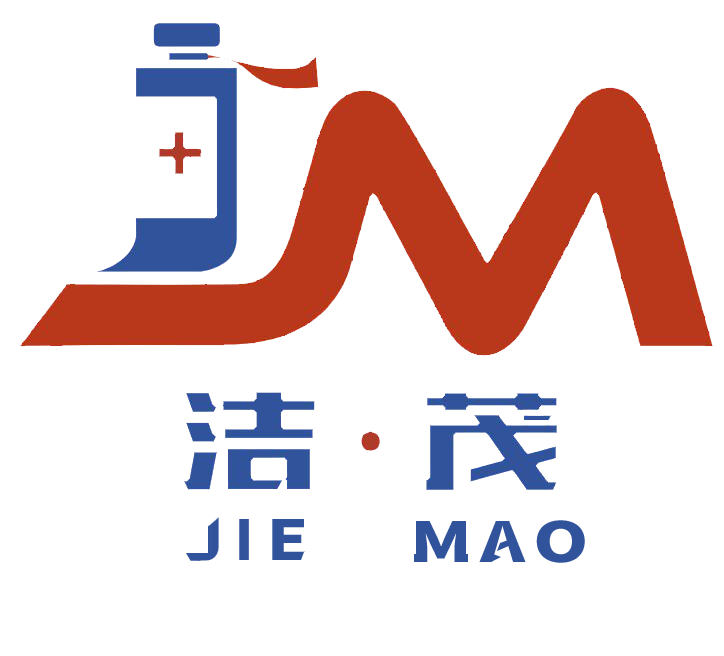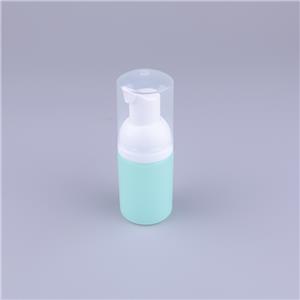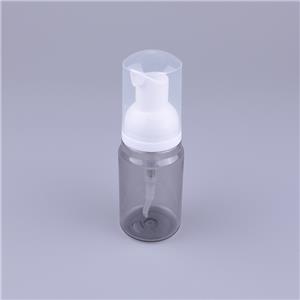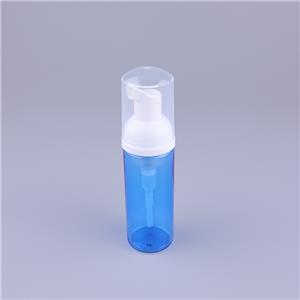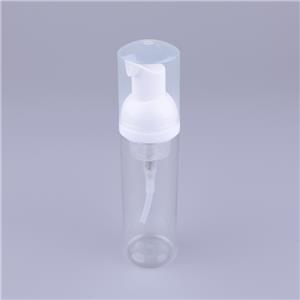- Home
- >
- News
- >
- Public Information
- >
- PE plastic raw material
PE plastic raw material
PE raw materials: universal plastics with characteristics, production, and diverse applications
PE (polyethylene) is a thermoplastic resin polymerized from ethylene monomers. As the world's largest general-purpose plastic, it has penetrated into various fields of production and life since industrialization in the 1930s due to its excellent comprehensive performance, low cost, and wide applicability. From daily shopping bags to industrial pipelines, from food packaging to agricultural film, PE has become an indispensable basic material in modern society with its unique advantages, promoting the development of polymer materials industry.
1、 Molecular Structure and Core Characteristics of PE
The molecular structure of PE is linear or branched carbon hydrogen chains, with repeating units of - CH ₂ - CH ₂ -. The regularity and branching degree of the molecular chains determine their performance differences. According to molecular structure, it can be divided into low-density polyethylene (LDPE), high-density polyethylene (HDPE), and linear low-density polyethylene (LLDPE).
LDPE molecular chain has high branching degree and low crystallinity (50% -60%), giving it good flexibility and transparency, with a density of 0.91-0.925g/cm ³, soft hand feel, excellent low temperature resistance, and can maintain toughness at -60 ℃. HDPE has high molecular chain regularity, with a crystallinity of 80% -95% and a density of 0.941-0.965g/cm ³. It has strong rigidity, high strength, and better hardness and wear resistance than LDPE, but slightly lower flexibility. LLDPE forms short branched chains through copolymerization of ethylene and alpha olefins, combining the flexibility of LDPE with the strength of HDPE, with outstanding tear resistance and puncture resistance.
PE as a whole has excellent characteristics: it has good chemical stability, is resistant to acid, alkali, salt, and most organic solvents, and does not react with substances other than strong oxidants at room temperature; Excellent electrical insulation, low dielectric constant, suitable for insulation layers of wires and cables; Good processing performance, can be formed through processes such as blow molding, injection molding, extrusion, etc., and has a wide processing temperature range and low energy consumption; Non toxic and odorless, in compliance with food contact standards, widely used in food packaging. However, PE has limited temperature resistance and is generally used at temperatures of -40-60 ℃. It is prone to oxidation and aging, and needs to be improved by adding antioxidants.
2、 Production process and raw material sources of PE
PE production uses ethylene as the core raw material, which mainly comes from petroleum cracking (naphtha cracking) and natural gas processing (ethane dehydrogenation). In recent years, bio based ethylene has been produced through biomass fermentation technology, providing possibilities for the greening of PE. The production process is divided into high-pressure method, medium pressure method, and low-pressure method according to pressure, corresponding to different PE varieties.
The high-pressure method is mainly used to produce LDPE, which is generated by free radical polymerization of ethylene monomer at 100-300MPa and 150-300 ℃ using oxygen or peroxide as initiators. The high-pressure environment causes a large number of branching of molecular chains, forming low-density, high flexibility products. This process has high energy consumption, but the product purity is high, making it suitable for fields such as thin films.
Low pressure method (including medium pressure method) is used to produce HDPE and LLDPE, using Ziegler Natta catalyst or metallocene catalyst, and polymerizing under conditions of 0.1-5MPa and 60-100 ℃. Low pressure environment reduces branching and forms high crystallinity HDPE; Adding alpha olefins (such as butene and hexene) for copolymerization produces LLDPE. Low pressure method has low energy consumption and high catalyst efficiency, and is currently the mainstream process that can accurately control the molecular weight and density of products.
The PE melt obtained after polymerization is extruded and granulated into granular raw materials, and additives such as antioxidants, lubricants, and coloring agents are added according to demand to improve processing performance and weather resistance. The selection of additives must meet the requirements of the application scenario, and food grade PE strictly limits the types and contents of additives.
3、 Classification and Modification Technology of PE
PE can be divided into three categories based on density and structure, each with its own characteristics and applicable scenarios. Performance boundaries can be further expanded through modification techniques.
LDPE (low-density polyethylene) has high branching degree, low crystallinity, excellent flexibility, transparency, and processing flowability. It has a wide range of melt indices and is suitable for blow molding films (such as food preservation bags and plastic films), injection molding small products (such as toys and bottle caps), and extrusion coatings. But its strength is relatively low and its solvent resistance is slightly poor.
HDPE (high-density polyethylene) has high crystallinity, strong rigidity, better tensile strength, hardness, and temperature resistance than LDPE. It has outstanding chemical corrosion resistance and is suitable for making hollow containers (such as mineral water bottles and chemical drums), pipelines (such as water supply pipes and gas pipes), boards, and heavy packaging films. HDPE processing has poor flowability and requires higher processing temperatures.
LLDPE (linear low-density polyethylene) balances flexibility and strength through its short chain structure, with excellent tear resistance, puncture resistance, and stress cracking resistance. It has outstanding tensile properties and is mainly used for stretch films (such as wrapping films), agricultural films, heavy packaging films, and injection molded products. It is often mixed with LDPE to improve film performance.
Modification technology is the key to improving the performance of PE: Crosslinking modification uses chemical or physical methods to form a network structure of molecular chains, enhancing heat resistance, solvent resistance, and mechanical strength, and is used for insulation layers in hot water pipes and cables; Adding modified fillers such as calcium carbonate and talc powder to reduce costs and improve rigidity and dimensional stability; Enhance modified composite glass fiber, carbon fiber, etc. to improve strength and modulus, used for structural components; Functional modification endows antibacterial, flame-retardant, anti-static and other properties, expanding to medical, electronic and other fields.
4、 The diverse application areas of PE
PE is widely used in packaging, agriculture, industry, daily necessities and other fields due to its diverse performance and low cost, supporting the operation of modern society.
The packaging industry is the largest application market for PE, with LDPE film dominating food packaging such as fresh-keeping bags and bread bags, which are transparent, soft, and have good sealing properties; Rigid containers made of HDPE, such as baby bottles and detergent bottles, are impact resistant and barrier resistant, suitable for liquid packaging; LLDPE stretch film, with its strong extensibility, is used for logistics winding packaging to reduce transportation losses; PE foam material (such as pearl cotton) is lightweight and shock-absorbing, used for packaging electronic products and precision instruments.
In the field of agriculture, PE film covering preserves moisture, increases temperature, and promotes crop growth. LDPE film has good flexibility and is easy to lay, while LLDPE film is puncture resistant and has a long lifespan; PE greenhouse film for light transmission and insulation, building a greenhouse; PE mesh bags are used for fruit and vegetable packaging, breathable and moisture-proof.
In the industrial field, HDPE pipes are widely used for municipal water supply, gas transportation, and industrial wastewater discharge due to their chemical corrosion resistance, low fluid resistance, and easy installation; Production of storage tanks, linings, and anti-corrosion equipment using PE sheets; The cross-linked PE cable insulation layer has good electrical insulation and aging resistance, ensuring the safety of power transmission.
In the field of daily necessities, PE products are everywhere: injection molded products such as plastic buckets, basins, and toys are lightweight and durable; PE fiber (polypropylene) is used to make fishing nets, filter cloth, and carpets, which are wear-resistant and weather resistant; Foam PE (such as slippers, yoga mats) is soft and comfortable, with good cushioning performance.
In the medical field, food grade PE is used to make infusion bags, syringe covers, etc. It is non-toxic and chemically stable, and can be steam sterilized; PE film is used for surgical gowns and packaging films to block bacteria and provide breathability.
5、 The Environmental Protection and Development Trends of PE
The environmental protection of PE has received attention, and although it faces the challenge of "white pollution", it is moving towards sustainable development through recycling and green technology innovation.
The PE recycling system is relatively mature, with physical recycling as the main method: waste PE is sorted, cleaned, crushed, melted and granulated, and recycled PE is used to make garbage cans, recycled films, plastic trays, etc. Chemical recycling breaks down PE into small molecule hydrocarbons, which can be used as fuel or chemical raw materials and have advantages in processing complex waste. The global PE recycling rate is gradually increasing, and policy promotion and technological progress are helping to promote a circular economy.
Biobased PE is a green development direction, which uses ethylene produced by fermentation of biomass (such as sugarcane and corn) as raw material. Its carbon footprint is lower than that of petroleum based PE, and biodegradable PE varieties (such as PE with added degradation aids) can naturally degrade in specific environments, reducing long-term pollution.
The future development of PE focuses on three directions: high-performance development through molecular design and composite technology, developing high modulus, high and low temperature resistant PE, and expanding engineering applications; Functional research and development of antibacterial and intelligent response (such as temperature sensitive degradation) PE to meet high-end needs; Low carbonization promotes the industrialization of bio based raw materials and chemical recycling, builds a "production consumption regeneration" loop, and combines lightweight design to reduce material consumption.
PE, as a basic universal plastic, supports the development of multiple fields with its excellent performance. Faced with environmental challenges, through recycling and green innovation, PE will achieve sustainable development while maintaining practicality, providing key material support for a green and low-carbon society.
